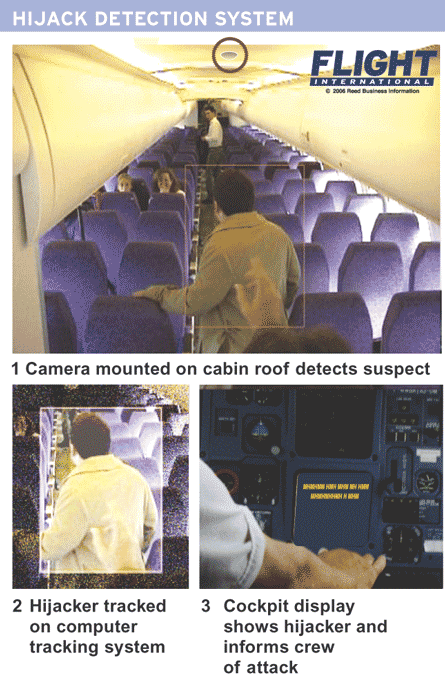BAE Systems and its research partners have completed initial tests with an in-cabin computer vision system intended to identify suspect behaviour by potential terrorists.
Cameras in the cabin monitor passengers and software algorithms developed by the Technical University of Munich, Germany, analyse the images for movement or other actions that indicate an unruly or potentially dangerous individual, whether seated or standing. Suspect behavioural characteristics were provided by undisclosed security experts. "Some of the work includes face recognition," says BAE Systems Advanced Technology Centre human factors specialist Katherine Neary.
The tests were carried out using cabin simulators in Munich with EADS and in Hamburg with Airbus, and also on board an Airbus A340 at Munich, with actors playing the parts of passengers and terrorists. Final testing and validation is set for the third quarter of next year, in Hamburg, using a generic cabin simulator.
BAE is spending £800,000 on the system, which forms part of the European Union's four-year, €35.8 million ($45.3 million) Security of Aircraft in the Future European Environment programme. Partners include Sagem, Thales Avionics, Siemens, Airtel, the University of Reading in the UK and Netherlands-based national aerospace laboratory NLR.
 |
|---|
Source: Flight International
















